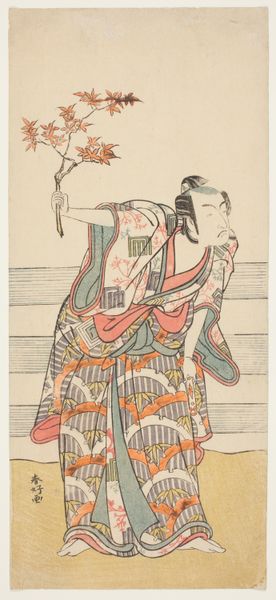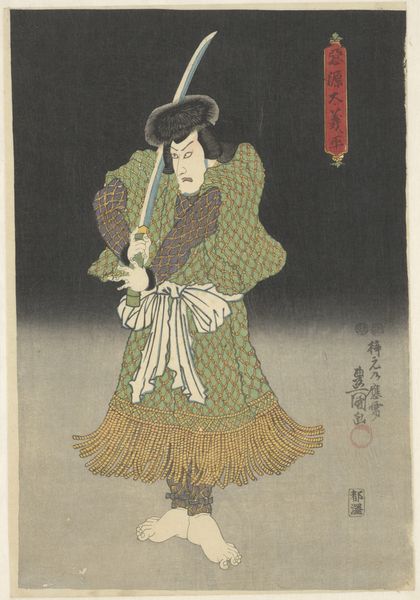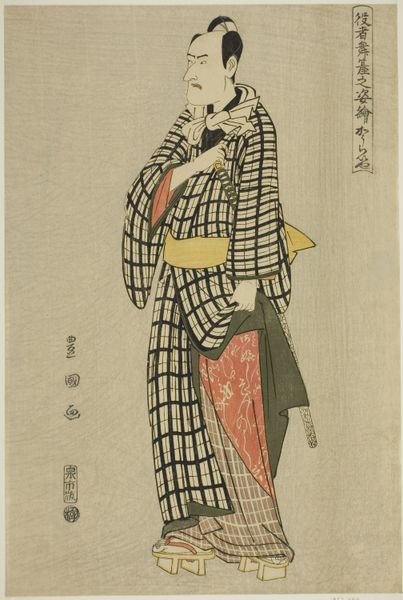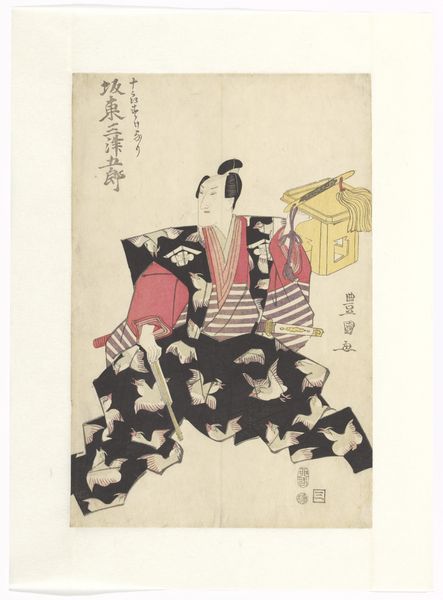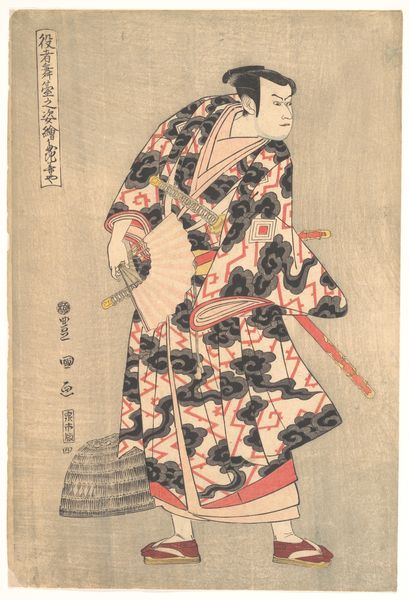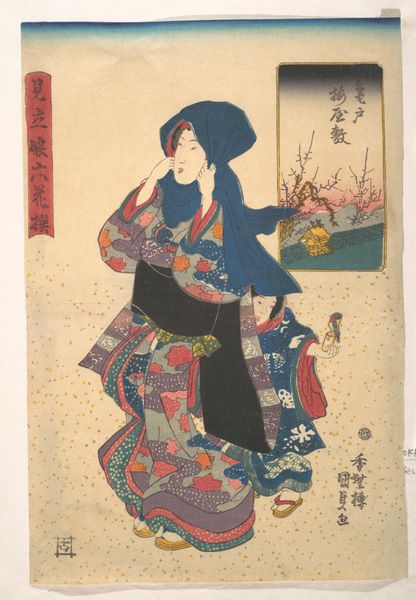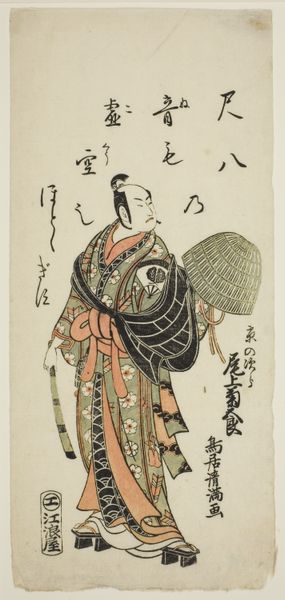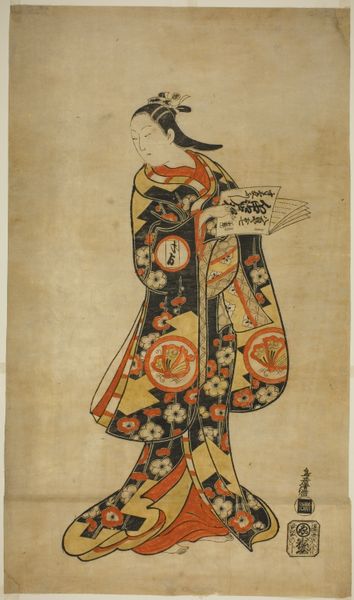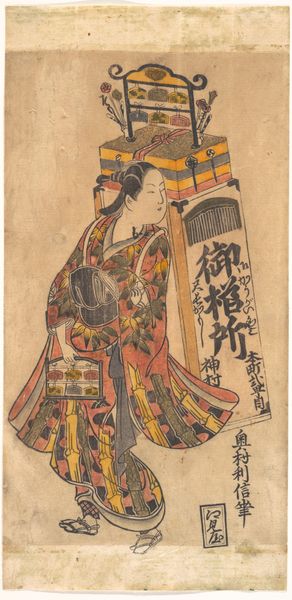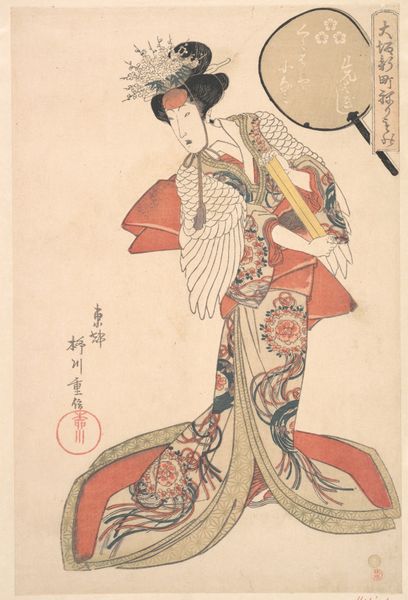
print, woodblock-print
#
portrait
#
narrative-art
# print
#
asian-art
#
caricature
#
ukiyo-e
#
figuration
#
woodblock-print
#
genre-painting
Dimensions: height 365 mm, width 247 mm
Copyright: Rijks Museum: Open Domain
Curator: Ah, here we have Utagawa Toyokuni I's "Kanpei hunting with burning fuse," a woodblock print created around 1808. It's a fascinating example of Ukiyo-e art, currently residing here at the Rijksmuseum. Editor: He looks a bit like he's about to burst into flames! All that straw, and that smoking fuse—a really visceral kind of tension, a bit unsettling, isn’t it? Curator: Indeed. Let's consider the formal composition. The stark contrast between the dark background and the figure's bright costume emphasizes the central subject. Notice the careful balance of geometric patterns in the clothing against the organic, radiating straw cloak. Semiotically, the diamond pattern in his robe and sleeves may point towards a social class division within feudal Japan. Editor: See, what strikes me isn’t the diamond pattern but this sense of contained chaos, all those textures wrestling each other: smooth lacquer versus the rough straw, the delicate smoke tendril versus his intense gaze. Does hunting always look this…theatrical? I’m imagining this isn’t just for catching dinner; there’s a story being told, right? Curator: Precisely! The burning fuse hints at narrative intrigue, a pivotal moment in a Kabuki play perhaps. Toyokuni’s mastery lies in capturing these transient yet decisive points. He shows a unique genius at character portraiture and costuming details, reflecting the popular culture of the Edo period, especially when applied to capturing pivotal dramatic situations like this. The fuse could be construed as both a literal tool and a symbolic device for a turning point, an irreversible action set into motion by Kanpei’s design. Editor: Almost too dramatic, that costume with straw… it makes you consider: how often is necessity really a choice, a show? That stiff cloak, does it liberate or restrain him? Maybe it mirrors how ritual, how even something necessary, ends up being more about performance, like how this hunter must be quite aware, I suspect, of exactly how he looks. Curator: It seems Toyokuni I intended such interpretations, layering socio-political commentary beneath his vivid representations of Kabuki icons. Editor: Thinking about how, even when someone is hunting, they might consider their act performance too really shakes the whole piece. That detail makes all the difference to how I experience this art! Curator: Yes, allowing diverse perspectives is why such pieces from the Edo period continue stimulating our engagement with cultural narratives.
Comments
No comments
Be the first to comment and join the conversation on the ultimate creative platform.
